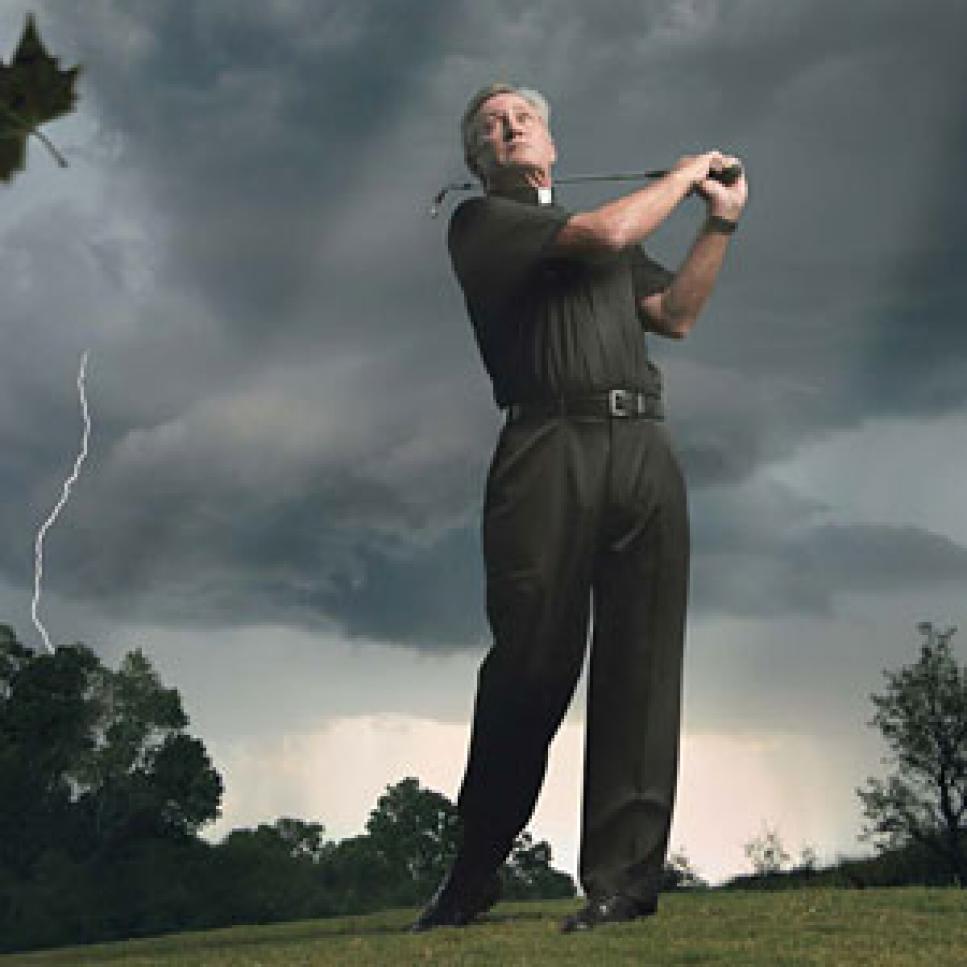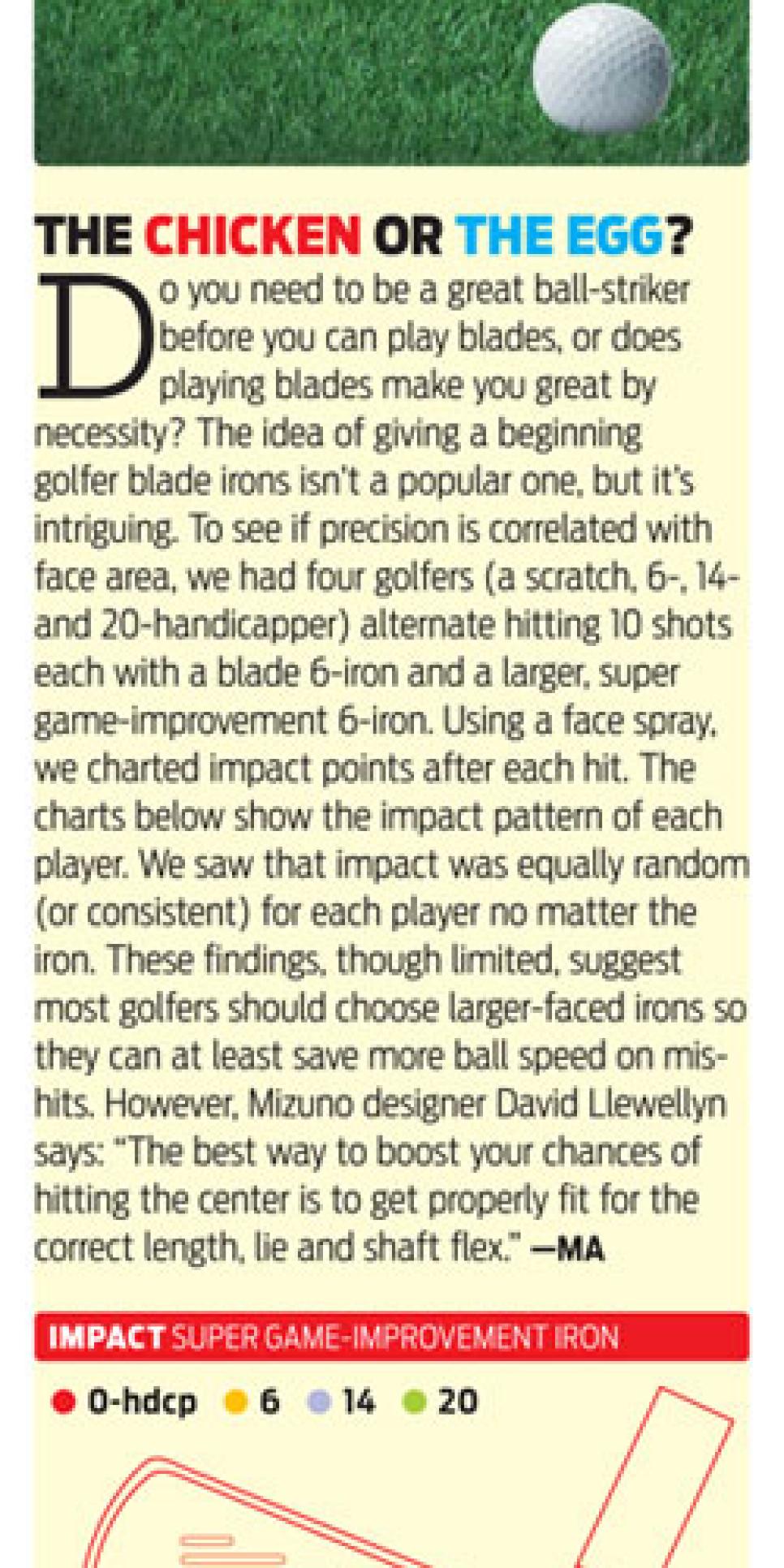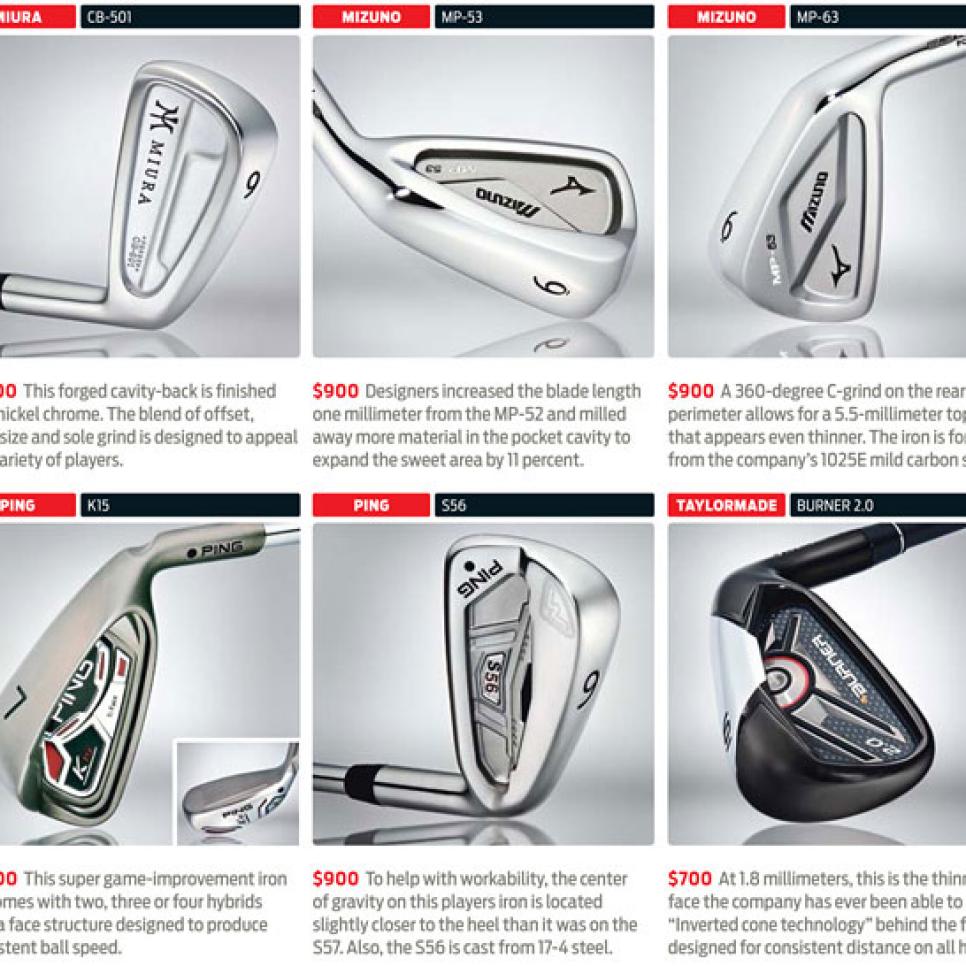Equipment
Can an iron be forgiving and aesthetically pleasing?

Just as the Church has become more tolerant on certain issues in recent decades, so too is golf equipment letting us get away with more on our mis-hits. Bigger, more stable drivers with hotter faces are letting us swing more recklessly and practice less. But can irons make the same strides in forgiveness? With metal woods, it's OK for one hot hit in 10 to fly farther than the others, but iron play demands distance gains be consistent. Irons are smaller, so there's less room for designers to work miracles. Still, when it comes to forgiveness, it seems, it's human nature to always ask for more.
Talk to club designers about forgiveness, and the physics term they most often cite first is "moment of inertia." This is the calculation of a club's resistance to twisting when struck off-center. An iron with a low MOI, for example, has a greater tendency to fan open and produce a weak slice when it makes contact with a golf ball toward the club's toe.
"The best way to increase MOI is to add toe weight," says David Llewellyn, research and development manager for Mizuno. "But this slows the toe down, so you have to blend the right combination of off-set and heel-weighting so the face rotates open and shuts naturally." Ideally, an iron would have the MOI of a horse when it hits the ball, yet keep the easy, manipulative feel of a muscleback blade throughout the swing. It goes without saying, this is a hard design to achieve.

Brad Schweigert, design manager for Ping, says the MOI of a 7-iron from the S56 line, which is for better players, is 2,400 grams-centimeters squared (g-cm2). A 7-iron from the super game-improvement K15 line has an MOI of 3,000 g-cm². What does this mean? "For a half-inch miss from center, you'd avoid losing about two to three miles per hour of ball speed with the higher MOI iron," Schweigert says. "That translates to probably five yards of distance."
That five yards might mean the difference between carrying a greenside bunker or not, but any meaningful leaps in forgiveness won't come from chasing higher MOI. It's already pretty much maxed out. Consider, the MOI of the Ping Eye2, introduced in 1984, was 2,600 g-cm2.
Will more forgiveness come from irons with lower centers of gravity? Probably not. Lowering the CG with wider, heavier soles does help launch the ball higher, but if it's pushed too far beneath the point where the iron contacts the ball, you start to lose ball speed.
"With CG and MOI there's only so much that can be done, and most designers already know how to optimize both across each iron category," says Golf Digest Technical Panelist Martin Brouillette, a professor of mechanical engineering at the University of Sherbrooke in Quebec. "With the Ping Eye2, we know they got a little lucky. But now we're to the point where we don't have to be lucky anymore." What he means is that designers have studied perimeter weighting for a long time, and they know how it works.
Perhaps more forgiveness will come from faster faces? Brian Bazzel of TaylorMade says that because of improved manufacturing processes, designers can cast an iron face at 1.8 millimeters thick. But faces can only get so thin before the space for the grooves becomes inadequate and the structural integrity is compromised. The future, Bazzel says, might instead come from larger heads. "Because we're making shafts lighter and longer, we can make the head slightly bigger so it looks like the right proportions optically. This gets us more ball speed."
"Bigger irons will go straighter," Schweigert says. "But remember, because there's more face to open and close, they're harder to manipulate by accident and on purpose."
But if ultimate forgiveness is what you're after, do you really care about shaping shots? When your goal is to get the ball airborne and hit it fairly straight, hollow-body hybrid-irons might be the answer. Designers from Adams say the four-way cambered sole on the company's hybrid-irons is playable from more lies. That brings us to the third way to get forgiveness: turf interaction. Whatever fantastic thing designers dream up next, matching the right sole design to that shape is the perpetual puzzle.
More forgiveness might come from something unexpected. Llewellyn has been analyzing iron impact vibrations. Collaborating with Norio Kubo at the Yokohama Institute of Acoustics in Japan, Llewellyn is experimenting with face-reinforcements to make the frequencies of mis-hits more closely approximate those of flush shots. Mis-hits that ring with the harmony of the heavens? Now that's forgiveness.



